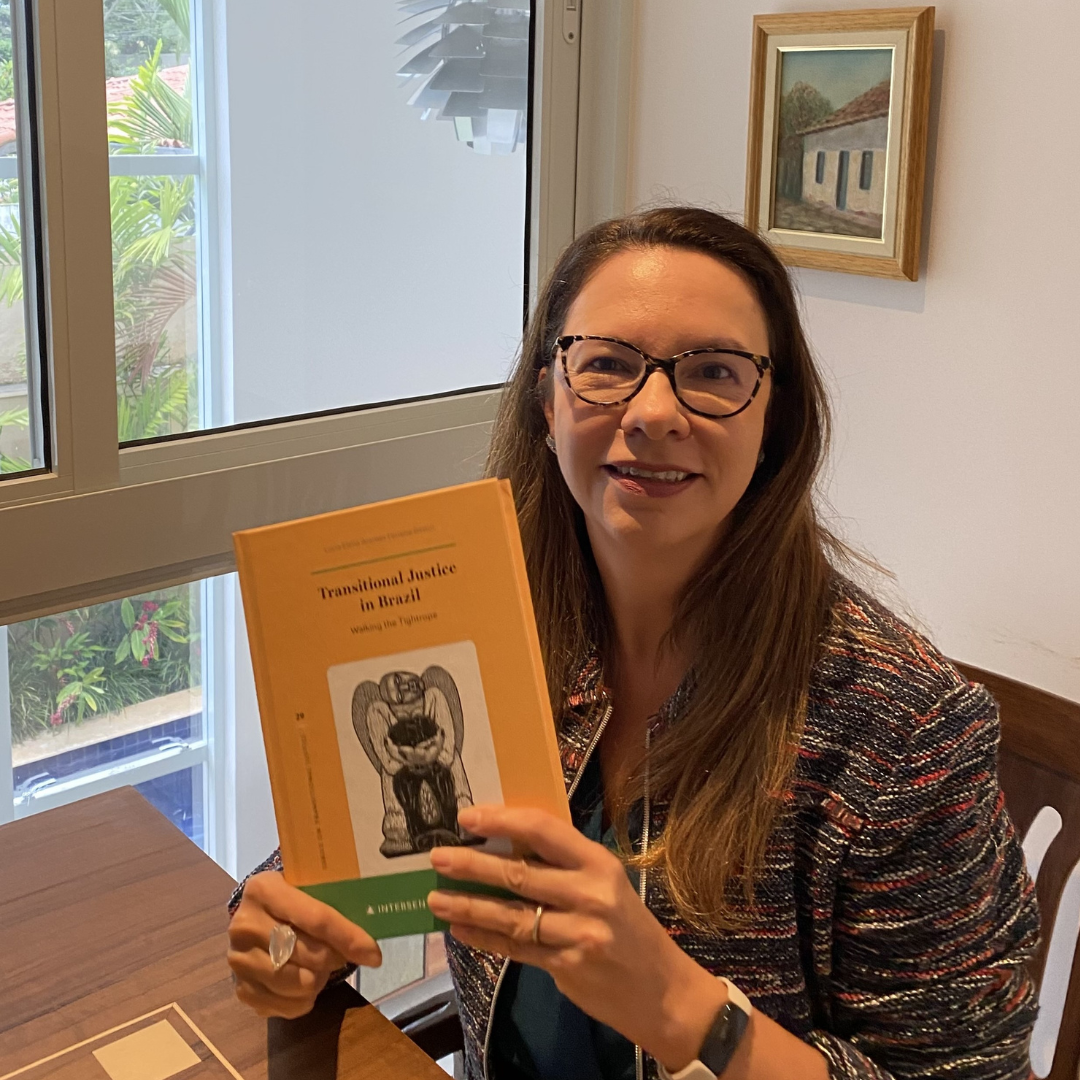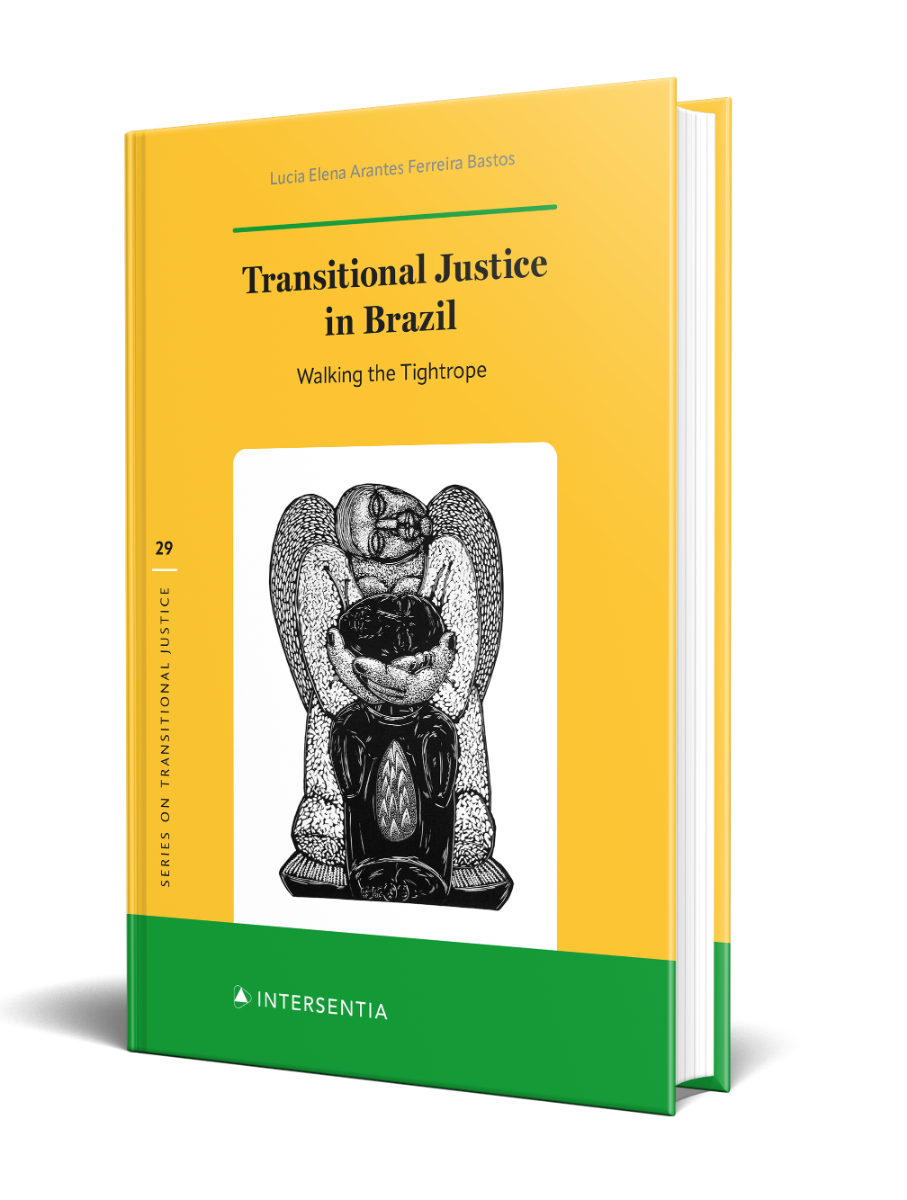| Interview |


Author Speaking: An interview with Lucia Elena Arantes Ferreira Bastos, author of Transitional Justice in Brazil: Walking the Tightrope, Part 2
In this exclusive interview, we speak to Lucia Bastos about her book Transitional Justice in Brazil: Walking the Tightrope, published as part of Intersentia’s Series on Transitional Justice. The second part of this interview discusses human rights issues in Brazil, how the state has sought to correct these historical abuses and in what ways these policies must be adapted to carry out the goal of transitional justice.
In terms of the usual mechanisms of transitional justice, which have been the most implemented in Brazil, and were they effective?
In general, shortly after the end of a violent regime and following a transitional period, there is pressure to prosecute those responsible for large-scale crimes against humanity. However, in many cases, prosecutions do not occur in the time or the manner expected, mainly because of the existence of amnesty laws or a new administration’s lack of the material and legal means to carry out prosecutions after a period of chaos and conflict. Therefore, in light of the prosecutorial gap that such obstacles produce, transitional justice frameworks commonly suggest hybrid practices like truth commissions and reparations programmes in order to meet reasonable expectations of justice. From the above list, in addition to truth commissions, the most common gap-filling mechanism has been reparations, which are intended to provide not only compensation, but also accountability through symbolic recognition and possible redemption for victims.
In the Brazilian case, as a result of the 1979 Amnesty Law and the delayed implementation of an official truth commission, which only occurred between 2012–2014, the main transitional justice initiatives from 1995–2014 consisted of two different reparations programmes. These were conducted initially by the Special Commission for the Political Dead and Disappeared and later by the Amnesty Commission, which, alongside financial compensation, also brought symbolic reparations and acknowledgement with initiatives like the Amnesty Caravans and launch of monuments.
Over the years, it has been said that such reparation projects conducted by those aforementioned commissions constituted the “structural axis” of Brazilian transitional justice. Moreover, the benefits distributed by such programmes were both material and symbolic, taking the form of cash payments; social welfare entitlements (such as government pensions); reinstatement to prior employment; career promotions; public apologies; outreach; memorials; educational initiatives; book-length publications; and funding for documentary films.
What does the legal future of Brazil look like?
In contrast to this record of actions towards the implementation of transitional justice mechanisms in Brazil, it may be argued that all of these movements were not enough, especially in light of the last years of our political history, which demonstrate that Brazilian society is still divided regarding accountability for the years of the dictatorship. Over the last 5–6 years, it is possible to observe that large sectors of the Brazilian population have remained indifferent, if not openly hostile, to a formal rewriting of the history of the 1964–1989 period, proving that large-scale civic action does not by itself guarantee progress toward democracy, nor a suitable epilogue to the transition that would help to consolidate democracy in the country.
As a result, there remains a latent risk that, although many measures have been implemented, they did not serve to mitigate conflict-era identities, but rather to reinforce polarised and exclusive understandings of guilt and innocence, victim and oppressor. That’s the reason why the subtitle of my book suggests that we, as Brazilians, are all still walking the tightrope in the search for a stable democracy.
There remains a latent risk that, although many measures have been implemented, they did not serve to mitigate conflict-era identities, but rather to reinforce polarised and exclusive understandings of guilt and innocence, victim and oppressor.
Another consideration concerning the mechanisms of transitional justice that were implemented in Brazil is that most of the advocacy and agency was focused on civil–political rights, rather than socio-economic rights. This runs the risk of limiting the transitional agenda. That is, while approaches rooted in the location of bodily remains, discovering the fates of the victims and bringing torturers to justice are hugely important for a democratic transition, there is also the threat that a narrow political perspective overshadows greater fissures or gaps that also should be included in human rights agendas. These include gender-related violence, land disputes, the claims of indigenous people, environmental conflicts and other economic and human rights issues.
Naming and shaming can only be successful if either the target actors or an audience central to the process of change actually believe in the social validity of the rule of law and democracy.
It seems that, in the future, we need a more universal discourse—one addressing human rights, democracy, transparency, an end to the continued use of torture inside prisons and/or of illegal detentions, just to name a few such issues—which might permit to access a framework that would be relevant to the daily lives of most citizens.
As to future actions, for instance, it remains for social movements to mobilise around the causes of the rights of indigenous people and lower-income populations. Causes that have been marginal to the transitional justice mechanisms found in the Brazilian context, such as the complicity of corporations and private actors in oppressions caused by the dictatorial regime and violence against gender and racial minorities, must now be prioritised.
While the Amnesty Commission and the Commission of Dead and Political Disappeared have launched several symbolic initiatives, the National Truth Commission worked to uncover past atrocities with its 2014 Report, and a new kind of social movement has recently emerged in the form of the escrachos and in collective and individual artistic interventions and performances. However, despite all of the above, large sectors of Brazilian society still pay scant attention to issues involving the dictatorship and its victims and their families. The phenomenon of insufficient public interest regarding such subjects has complex causes, but one contributing factor to this lack of public mobilisation is the 1979 Amnesty Law. This is because that particular law continues to be regarded as a settlement between victims, society and the Armed Forces, facilitating the myth of a reciprocal amnesty. Another factor has been the lack of adequate education about the history of the dictatorship; many Brazilians still know very little about state repression during this period.
Thus, what is still lacking is the power of a dominant discourse leading to compliance with human rights norms and regulations. Naming and shaming can only be successful if either the target actors or an audience central to the process of change actually believe in the social validity of the rule of law and democracy.
At what point does Brazil’s transition into a permanently stable and socially peaceful regime reach its end goal?
With respect to the problems confronted by Brazil throughout its transition, its goals and what to expect from my recent book, it is worth remembering that processes of democratisation after periods of political violence and dictatorships are never smooth. In the case of Brazil, the main challenge has become the extended transitional period, which has given rise to different politics of memory in a context that includes persistent social and economic inequalities and continuing instances of police brutality. In addition, more than three decades after the transition to democracy, many issues regarding the recent past are still pending.
Unfortunately, the consequences of an unfinished project of transitional justice are not limited to the victims of the violations of human rights which occurred during the dictatorship, as impunity, in Brazil, up to now, has contaminated the state’s institutions and the rule of law, and continues to undermine the credibility of the state itself.
At present, efforts to elucidate human rights violations and forced disappearances are ongoing, including the search for clandestine graves, the identification of remains, the definition of data parameters and public information about the phenomenon of forced disappearance in the present. Additionally, there is a simultaneous dispute on the 1979 Amnesty Law, since the Brazilian Supreme Court hasn’t reached the final sentence concerning the scope of this law. There is also an ongoing discussion about the potential for a full achievement (or otherwise) of reparation programmes initiated in 1995 and 2002, and the hope that the recommendations of the 2014 Report presented by the National Truth Commission (NTC) may be implemented with the creation of a follow-up body to the NTC. This body could be responsible for assisting the country in the incorporation of social and economic rights and consideration of gender, race, diversity and territorial protection for indigenous tribes, with effects on reinforcing public policies and spreading the respect for human rights in Brazil. In addition, there is a pending debate about the construction of memorials, because these initiatives have triggered disputes and controversies, where both the state and private actors are in conflict.
Unfortunately, the consequences of an unfinished project of transitional justice are not limited to the victims of the violations of human rights which occurred during the dictatorship, as impunity, in Brazil, up to now, has contaminated the state’s institutions and the rule of law, and continues to undermine the credibility of the state itself. As a result of the lack of prosecution of past crimes, there is a perception that it will eventually be possible to suppress the rule of law. This negligent attitude implies that “some” Brazilians are above the law, because their criminal actions, although outrageous, have not yet been prosecuted. This impunity lies at the heart of the popular belief that “sometimes” torture is justified, which, in turn, may underlie the continuation of violence in the country—that is, the persistent use of torture as a procedure in investigations. This legacy of authoritarianism remains a cruel reality in Brazil, since brutal killings by police and by prison staff continue to occur.
About the book


Transitional Justice in Brazil
This book offers a Transitional Justice framework in the Brazilian case by assessing the mechanisms associated with truth, memory, and justice, but also including a holistic approach covering the role of civil society, reparations for indigenous people, initiatives on gender, and complicit corporations.
Lucia Elena Arantes Ferreira Bastos
May 2023
ISBN 9781839703270